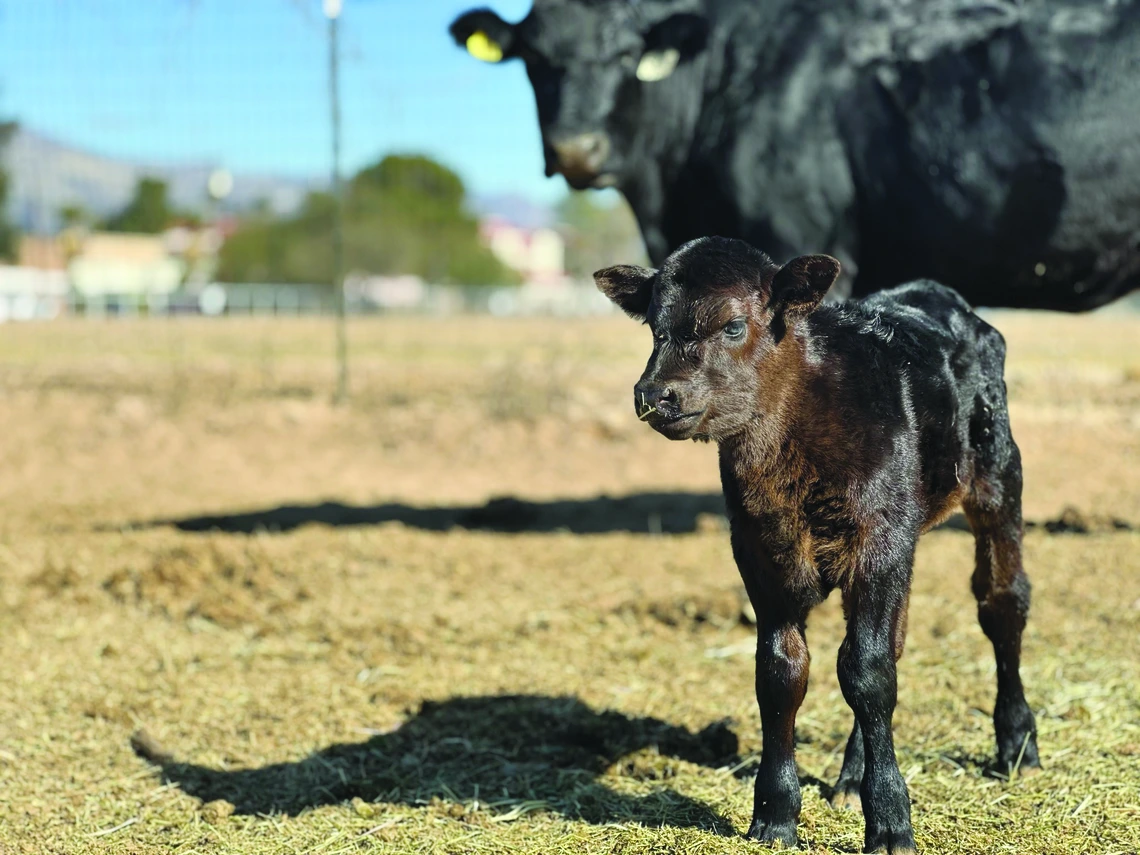ACBS Farm has a successful calving season

Amber Hubbell
Calving season is the best season! Watching the calves being born and after a couple days, watching them run and play is always a fun time! For the 2023 calving season, the ACBS Farm calved first time heifers and cows all bred via artificial insemination (AI), with 95% calving over 8 days. Using AI allows for estrous synchronization protocols to be used which results in a close birthing time frame between all the cows and heifers at the farm. Being able to better predict when a cow or heifer will calve makes it more likely that observation will occur during birth and assistance can be provided if needed.
Students enrolled in the UArizona Calving Management Class for the Spring semester were able to witness live births, help apply ear tags for identifying calves, give vaccinations, and weigh calves for record keeping; all part of high quality stockmanship and management practices. Students learned how to process the calves while not stressing the cow. One way to do this is to not separate the cow from her newborn while gathering information for records. This gives the cow ease as students are working with her baby and also comforts the calf.
Course instructor, Amber Hubbell, emphasizes to students that observing and knowing what is normal for their cattle is also an important practice. Amber monitors the animals on the farm regularly throughout the day. Watching their specific “normal” behavior helps her know when something is wrong, and she needs to address it. She feels the most important part of the Calving Management course is the hands-on aspect. About the course she says, “Students need to be around the cattle, watching their behavior, watching how the cattle behave while eating, not eating, birthing, caring for their baby, not caring for their calf, to better understand the small differences that could help them decipher when an animal needs treatment. But beyond that, how to make management decisions to prevent catastrophic events”.

